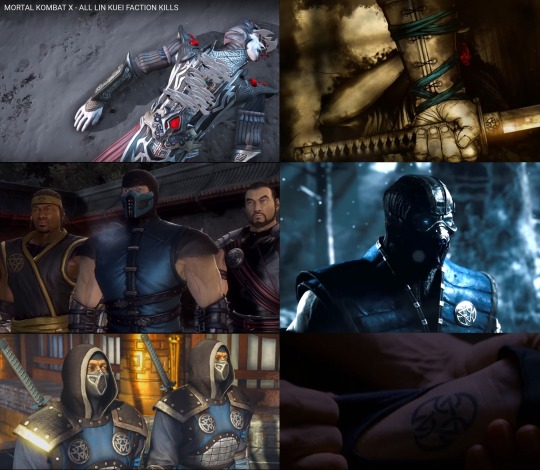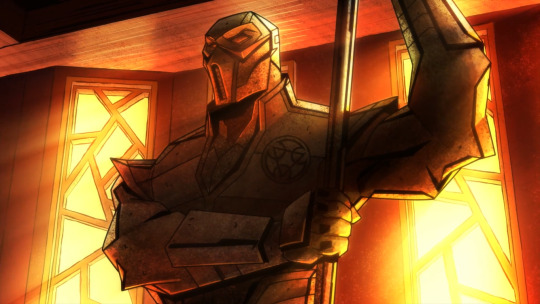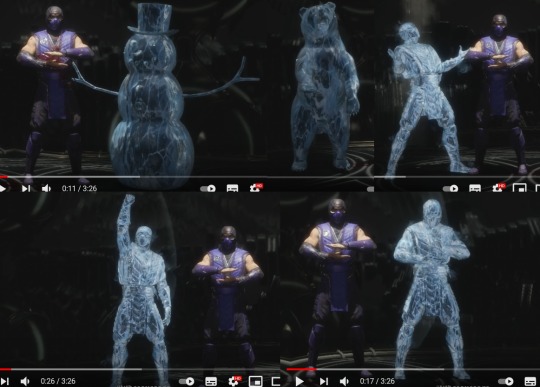#but i mainly think about elements and weaknesses when using martial/hidden artes
Explore tagged Tumblr posts
Text

Just unlocked this thing in Tales of Berseria. "Allows the use" of martial arte "derivatives" under "certain conditions". Whatever the FUCK that means. I know what it means, and it's no thanks to this awful description, so I'm gonna rant about it and fix it because I'm frustrated at this display of incompetence
First a little fairness. While a martial arte "derivative" is a total nonsense term, it's easy to figure out by looking at the "Set Artes" screen. Each arte has a derivative arte, which is just some other arte from that character's moveset chosen pretty much arbitrarily. The name is awful, as the derivative arte isn't really derived from the arte at all, but it's not a major issue.
More of an issue is "certain conditions". I hate when video games say stuff like "certain condition" or "specific items" and then refuse to actually explain it. The worst part is, there AREN'T any conditions to using arte derivatives, unless you count "knowing the arte" and "having enough SG to use the arte" as conditions. This is confusing, but doesn't really hinder your ability to use arte derivatives.
Another minor problem is that it says "martial artes" but it actually works for hidden artes too. You can figure it out really quick by seeing arte derivatives listed for hidden artes, but the fact that the description is seriously just lying to you is just sloppy.
The core issue: How do you use arte derivatives? The game does not tell you. At all. In any way. You do it by keeping the arte button held down, and then the arte derivative will be used after the current arte. I have no idea how they expected anyone to figure this out without so much as a HINT. Nothing in the description, not in the tutorial menu, absolutely nothing about holding down the arte button.
Here's my rewrite:
"Allows the use of martial and hidden arte successors by keeping the arte button held down.
An arte's successor arte is listed at the bottom-right of the description in the "Set Artes" screen."
You might notice that the first paragraph is longer, but it'll still fit. They had room for more text to explain but they chose not to use it. Anyway a few minor changes; clarifying that it works with hidden artes, and specifying "an arte's successor arte" instead of just "it" in the second paragraph. Then of course TELLING THE PLAYER HOW TO ACTUALLY USE THE DAMN THING!! It's not that hard!
I also changed "derivative" to "successor". An arte is followed by its derivative, so successor is a more fitting name. There could be a better name, successor is just what I came up with after 10 seconds of thinking about what to call them. Because why the fuck would you call them derivatives.
Anyway there's another related potentite called Wizard's Ventite so when I get that I'll reblog this post with a follow-up.
#original#tales of berseria#to any other ToB players reading this: did you ever actually use the warrior's ventite?#i mean just understanding what it does is a challenge but even after that... it seems kinda useless?#especially compared to the wizard's ventite. that one rocks because you get to equip small spells and big spells on the same slot#but martial/hidden artes don't have cast times. AND you still need to actually fully use the arte before using its derivative#also malak artes are just “derivative = bigger spell” which is useful and easy to remember#but i mainly think about elements and weaknesses when using martial/hidden artes#and having to remember the properties of each of my derivatives in addition to all the artes i have equipped...#that's a lot of effort. i already have trouble just remembering which of my artes are effective against which enemy types#and i can usually hit the enemy's weakness with just my equipped artes anyway#so did anyone actually use these? and if so what made them useful?#they seem really cool! but they're a lot of work for what seems like very little reward
2 notes
·
View notes
Text
Lin Kuei: Art
RELIGION <> ORIGINS / ARCHITECTURE <> FOOD <> FOR THE LIN KUEI <> ART <> CRYOMANCERS <> LIN KUEI SOCIETY <> MONEY & MATERIAL GOODS
The continuation of the morgianesffs-blog’s list of questions about Lin Kuei. For the formalities, the original questions:
What do you think the Lin Kuei's view on artistic culture (probably not the right word) is? I know they are heavily militaristic, but in the game, Kuai Liang offers Hanzo tea and he properly prepares it the Japanese way, that says they have something of an education other than just related to fighting?
In contrast to religion as a belief in gods that Lin Kuei seems to constantly reject for ages, I think broadly understood art plays a more vital role in their culture.
Sadly, there is little direct source material in that regard - named Lin Kuei warriors rarely let themselves “waste time” to straightway talk about beauty of handmade artifacts or poems or music or other stuff fitting the definition of art. But as history proves time after time, art is an inseparable part of human existence and militaristic societies aren’t different in that regard from the peaceful ones. As far as games and some old material sources are concerned, Lin Kuei isn’t exception. Their aesthetics, symbolism and emotional value hidden between may not be eligible to outsiders but the amount of beautiful yet with no practical role decorations seen outside and inside Temple or well-crafted weapons and armors strongly suggest that Lin Kuei respected craft.
Frankly, martial arts and art (music, calligraphy, armorsmith, weaponsmith) have this in common: to achieve a satisfactory level of mastery, talent alone is not enough. Both require discipline, years of training and striving for perfection. What fits well into Lin Kue philosophy.
Mortal Kombat novel (1995) stated:
[Lin Kuei] would kidnap children when they were five or six and raise them in secret caves or woods to become superb athletes, great scholars, and unparalleled fighters, able to use all weapons and to improvise arms from common objects such as paper rolled to a knife-point or sand packed into a sock. They would train the children, boys and girls both, to be masters of many trades: carpenters, fishermen, priests, and even beggars, so they could blend in and make themselves useful in different towns as they traveled on missions for their lords.
This passage strongly implies comprehensive education, also in professions requiring creative/manual abilities (carpenters) or specific knowledge that may include familiarity of (religious?) art and philosophy. There is no way to tell how the education of adepts looks in modern time, but considering how well versed the warriors are in technology (C.I. project) chemistry (Cyrax’s bombs), anatomy (all brutalities & fatalities) or language (in Alternative Timeline English is not the native language of any(?) named Lin Kuei) we can assume it still covers a wide range of specializations. Making (practicing) art is related to creativity and manual skills, so it could be part of said education.
Another important role that art most likely plays is building and maintaining the common identity of Lin Kuei warriors. Because of that the interior of the Temple is decorated with a clan sign,

which also appears on their armor and weapons and even tattooed on their body (at least in MK Conquest TV series)

and, like was shown in Mortal Kombat Legends: Battle of Realms, the main(?) hall is decorated with statues of warriors. One looks like Sub-Zero,

although I doubt that it is a sculpture created in honor of the fallen Bi-Han. Unless it was created so quickly, I think it could be images of the clan's founders, or images of historically important warriors, or even an anthropomorphic representation of the elements (like ice) on which the clan's power was built.
Even if the warriors themselves were not involved in crafts, the Lin Kuei had skilled craftsmen equipping them with the necessary items.
There is also an aspect of sheer aesthetics that brings psychological comfort. Something that was definitely useful to warriors who lived under a lot of pressure. The beauty of rich ornaments and spacious architecture create a safe space to meditate or relax after difficult missions or close-to-death experiences. Likewise, art could be a safe (or at least safer) way to express themselves or deal with emotional trauma, in otherwise very strict society that can not stand weakness.
Interestingly, in additional sources like game cosmetics or win poses, Kuai Liang shows creative tendencies. For examples, his ice clones have various shapes even though there is no practical use of them in win pose:

Then we have the variety of his arsenal. As a cryomancer, Kuai Liang depends mainly on his ice power to create weapons. He can use anything at hand, freeze it solid and smash, slash or stab the opponent. To kill or injure an enemy, Sub-Zero does not need a sophisticated tool yet many of his MK11!axes have additional ornaments or more defined shape than it is really necessary:

All of the mentioned examples and the not discussed detailed ornaments on Sub Zero’s armors or even his style of speech (that may be influenced by some literature considering Jacqui’s accusation of “borrowing that line”) strongly suggests to me that Lin Kuei in general appreciates broadly understood art, especially the handicraft such as armorsmith or weaponsmith. This may also be one of factors why some warriors like Kuai Liang look down on technology and especially guns, a weapon mass produced and with no finesse.
As for the tea ceremony, by no means I’m familiar enough with Asian culture to say it for sure, but it didn’t look like Japanese brewing style to me. That and I highly doubt Kuai Liang would dare to do so in front of hot-headed, distrusting Hanzo who could easily read that gesture as Lin Kuei once again mocking him and his clan. Knowing how Sub-Zero wanted to make peace, I don’t think he would have taken such a careless step. Beside that observation, it is another example how well-versed and educated Kuai Liang is, even in matters that don’t have any military use.
In summary, I personally believe that art plays a vital role in Lin Kuei society. It helps in creating and unifying their warrior identity and pride in long-lived clan traditions, brings emotional comfort when needed and gives a way to express themselves (the fighter’s individuality) in safer, subtler ways. Even if warriors don’t craft weapons or armors themselves, there are specialized groups of people who provide them with the best quality craftsmanship. Because of course Lin Kuei demands and respect the perfection.
#mortal kombat#my replies#lin kuei#sub zero#kuai liang#i probably could talk more about sub zero and arts#or in general lin kuei and arts#but the text would be too long again#and i already made people wait too long for the answers#sorry :P#maybe next time i will talk more about the not discussed here stuff#if anyone will want that
78 notes
·
View notes